Lying along Sri Lanka’s south coast 35 km east of Galle, the small port town of Mirissa is the best place in the world to see the magnificent Blue Whales – the largest animal to have ever lived on earth.
To see Blue whales in Mirissa, you’ll need to join a whale watching tour. And not all tours were created equal. In a country ravaged by civil war where over a million people rely on the travel industry for their livelihood, the welfare of animals in touristic encounters may not always be the first concern.
We visited Mirissa at the end of our two-week-long Sri Lankan safari to see the giants of the ocean living in its coastal waters. And Mirissa didn’t disappoint.
Ethics of Whale Watching in Mirissa
Whale watching in Mirissa, and to a lesser extent in Trincomalee, is one of the most popular things to do in Sri Lanka. Not surprisingly, there are many different tour operators offering whale watching in Mirissa, and unfortunately, most of them are not concerned with the ethics of human-whale interactions.
Most of the boat operators don’t see anything wrong with chasing a whale for hours and approaching the animal much closer than the international whale watching guidelines allow.
Read more: 11 Things to Do in Mirissa
Such behavior by tourist boats causes constant stress to the whales making them leave their preferred feeding areas. And for a 120-ton animal, not being able to consume enough food is no laughing matter.
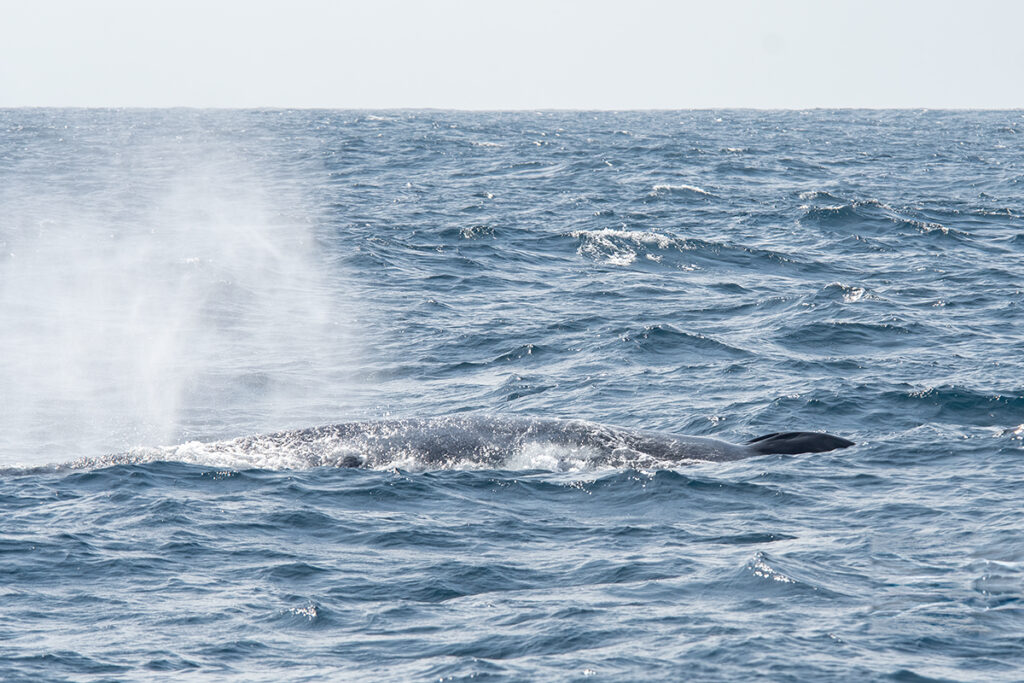
We’ve done our research before the trip and following recommendations from other wildlife-watchers, we booked a tour with Raja and the Whales – the town’s best ethical whale watching company.
Raja and the Whales are a local family-run business and the original whale watching tour operator in Mirissa. They were the first company to offer tours to see Blue Whales in Mirissa. And they remain the most ethical and professional whale watching operator in Mirissa.
Not only does the team at Raja & the Whales follow the international whale watching guidelines they also provide valuable data to various international research and conservation organisations.
Mirissa Whale Watching Season
The whale watching season in Mirissa runs more or less from August to the end of April. During the peak season (November to April) the whale watching boats go out daily, providing there are at least 10 people booked for the tour. Tours between August and October are more weather-dependent. And during the peak of the monsoon, between May and July, no whale watching boats will risk the turbulent seas.
Whale Watching in Mirissa – Author’s Experience
The day with Raja and the Whales starts with a complimentary pick at your Mirissa accommodation at 6 am. Our tuk-tuk arrived around 6.10 am and took us to Raja and the Whales’ office near the harbour where some of our fellow whale watchers were already waiting.
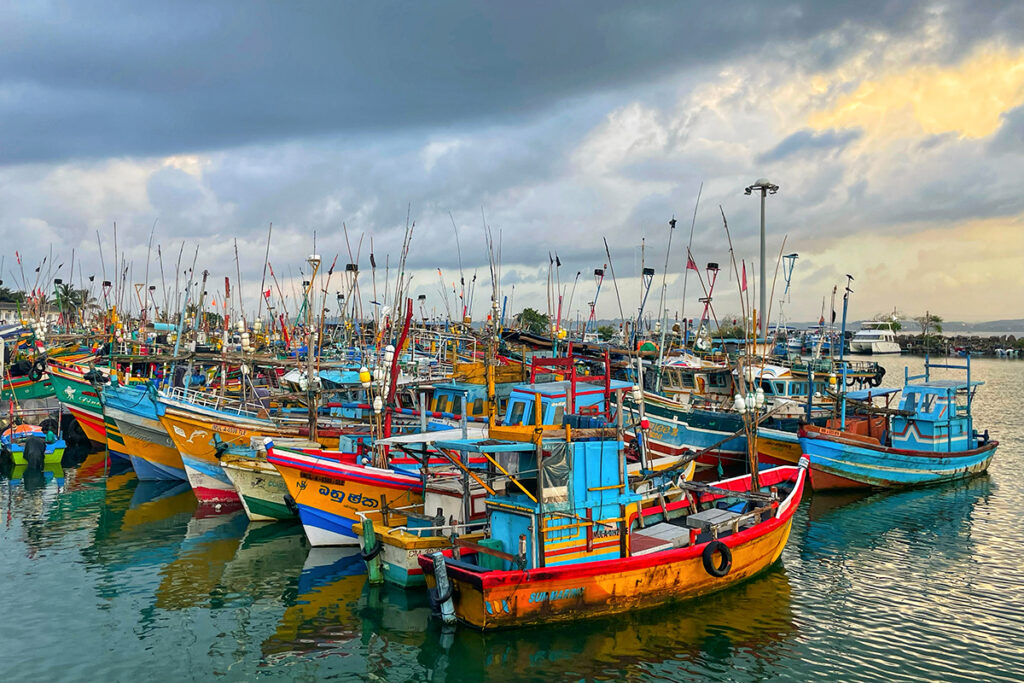
We met our skipper-cum-tour leader to finalize the payment (you’ll need to bring cash with you) and for a quick debrief which included an offer of a seasickness tablet. The Indian Ocean is quite rough, so if you are prone to seasickness or if you don’t know whether you are, you’ll definitely need to take the meds, ideally at least an hour before the trip. But if you haven’t, don’t refuse the skipper’s offer.
We had the relatively calm sea, I’ve certainly watched whales in much worse conditions, but unlike the double-hulled catamarans that are used for whale watching cruises in Australia and offer exceptional stability, Mirissa’s whale watching boats are monohull vessels and they get tossed around enough to discourage any attempts at walking while the boat is in motion and even when it stops.
You can and do walk on the boat, but it is an “all hands on deck”-kind of experience. In short, it’s very rocky and seasickness-inducing. So if in doubt, take the meds.
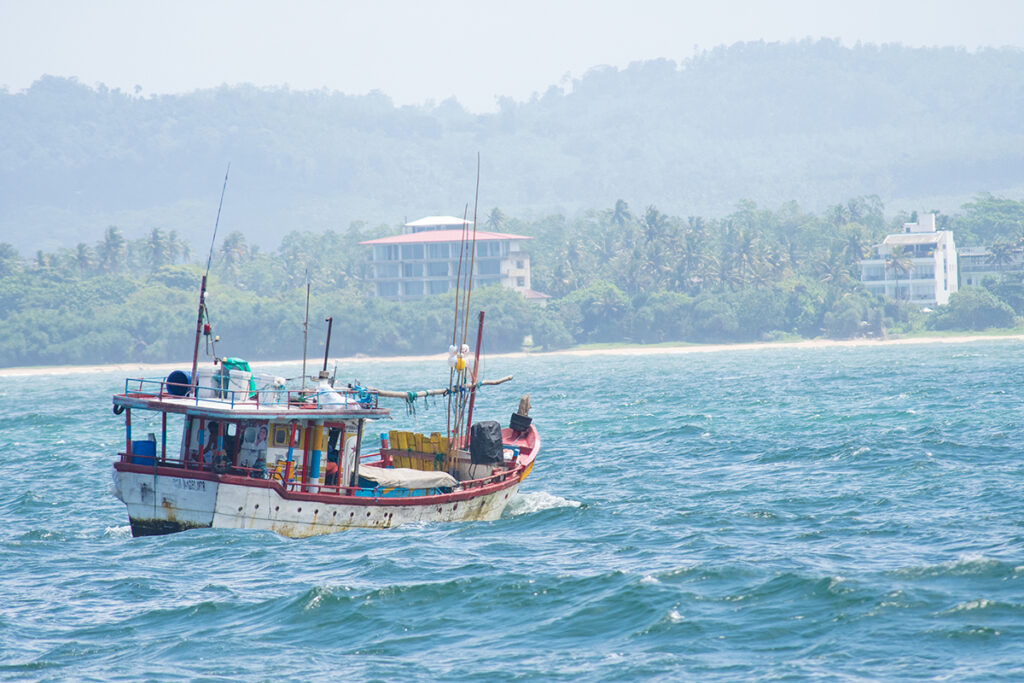
Just before 6.30 am, we walked to the harbour where multicoloured fishing boats were bobbing up and down moored in neat rows. In the soft early morning light the harbour looked particularly picturesque.
Next to the rickety fishing boats, our vessel appeared quite grand. It had two decks. The low deck was a cooler, darker space with fixed rows of seats and two bathrooms. This is where we were outfitted with life jackets which we were to wear for the duration of the cruise.
The top deck was bright and spacious with gym-style floor cushions laid out along the bow railing. These looked like the best seats in town so settled on them. There was also a raised bench at the stern, which some people preferred.
The skipper gave us a quick rundown on what to expect. For the first hour, we’ll be making our way out of Weligama Harbour and then cruising a few hundred meters up and down along the coast. After that, we will head into the deeper waters of the open ocean to look for the whales in earnest.
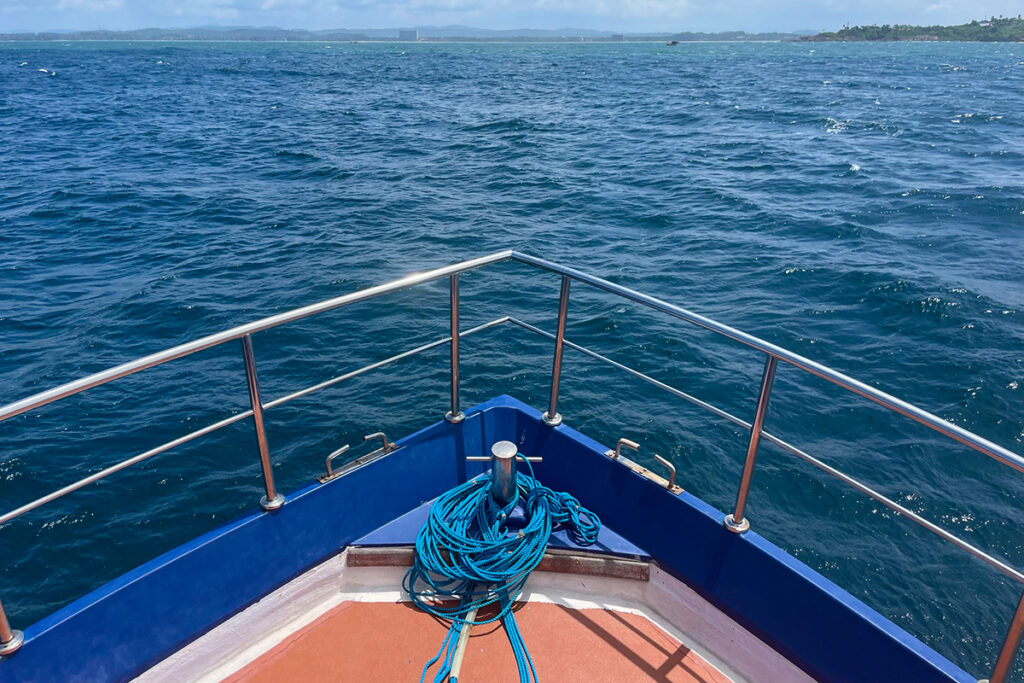
The experience Raja and the Whales offer doesn’t have a time limit on it. The tour will last as long as it takes to find the whales, or at least make the best possible effort to find them.
So your cruise can last anywhere between 2 and 8 hours. But the majority of the cruises last between 4 and 6 hours, and in the end, ours was about 6 hours.
As we started cruising into the harbour, the crew cooked up a breakfast of eggs, fresh fruit and coffee and brought the plates to where each of us was seated. Even in the harbour, the boat rocked quite a bit.
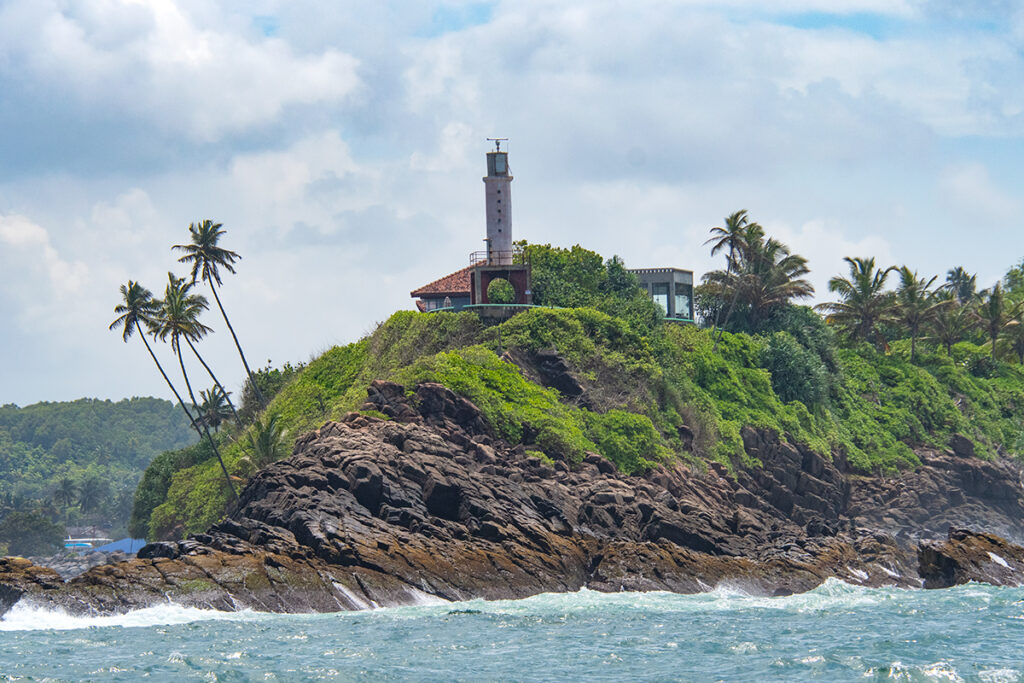
I noticed that the guys in a group sitting next to us were taking their seasickness tablets and thought that it was too late in the game for the tablets to take effect. And sure enough, 15 minutes later one of them became violently sick. The crew helped him make his way to the low deck and we haven’t seen him again.
The first couple of hours were quite uneventful and once we had breakfast and wedged our belongings under the heavy floor cushions to prevent them from flying off the boat, we settled into watching the glistening surface of the ocean for any signs of whale activity.
About a mile away from us, three or four boats were clumped together and the skipper confirmed that they were, in fact following a Blue whale. With several boats already crowding the whale and more, no doubt, on the way, the skipper explained that we would go further out into the ocean to find ‘our own’ whale instead of contributing to the crowd already gathering around that whale.
He asked if we were okay with it, but I was happy to see that he would’ve made that choice even if we weren’t too excited about it.
Fin Whales
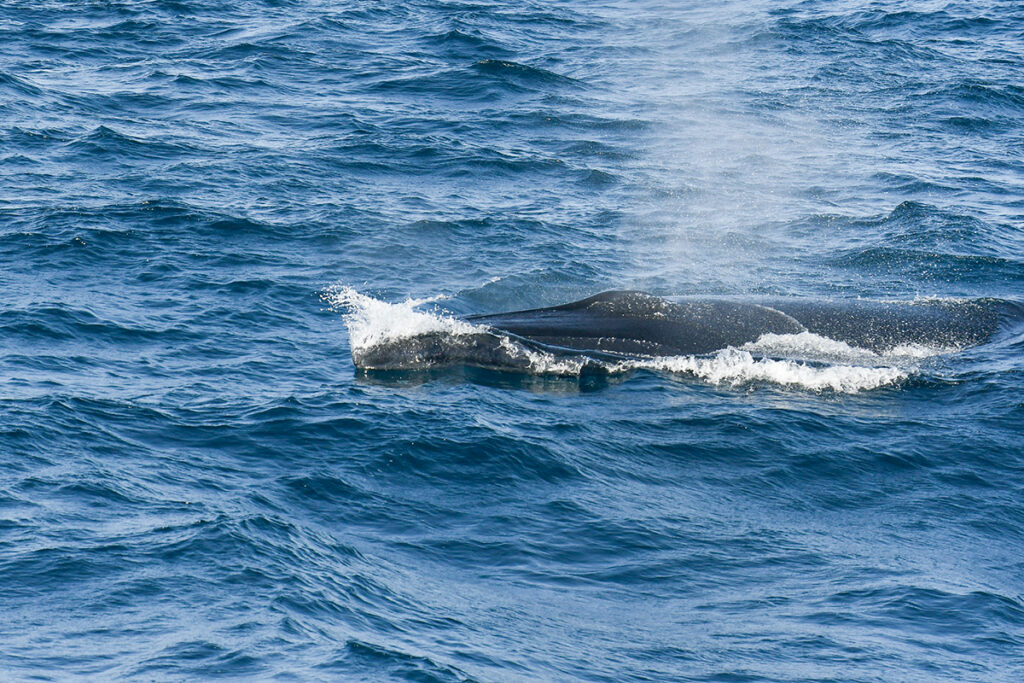
We continued cruising into the ocean until stormy clouds started to gather on the horizon. We changed course away from the storm and before long the crew spotted a whale and the deck exploded into a hive of activity. Instructions were shouted in Sinhalese and in English and we learned that the whales nearby were a Fin whale female and her calf.
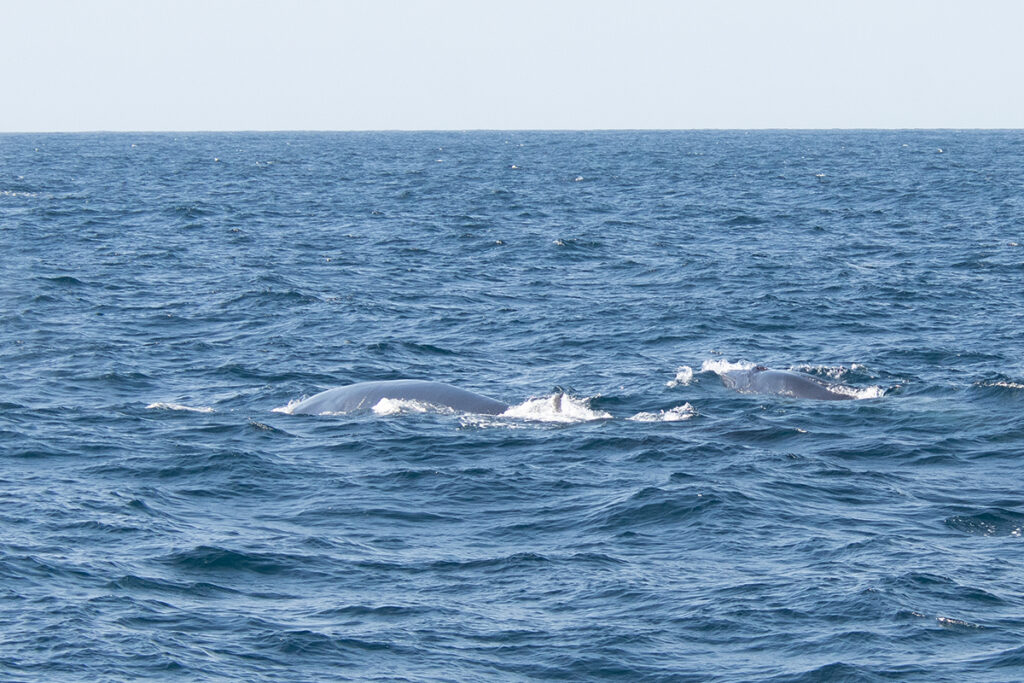
The duo surfaced not far from the boat and we could see the enormous shape of the mother as the top of her head broke the surface followed by her back that taped off to her tail fluke as she took a dive. The calf was harder to spot in the choppy water but I could see it better in the photos I took.
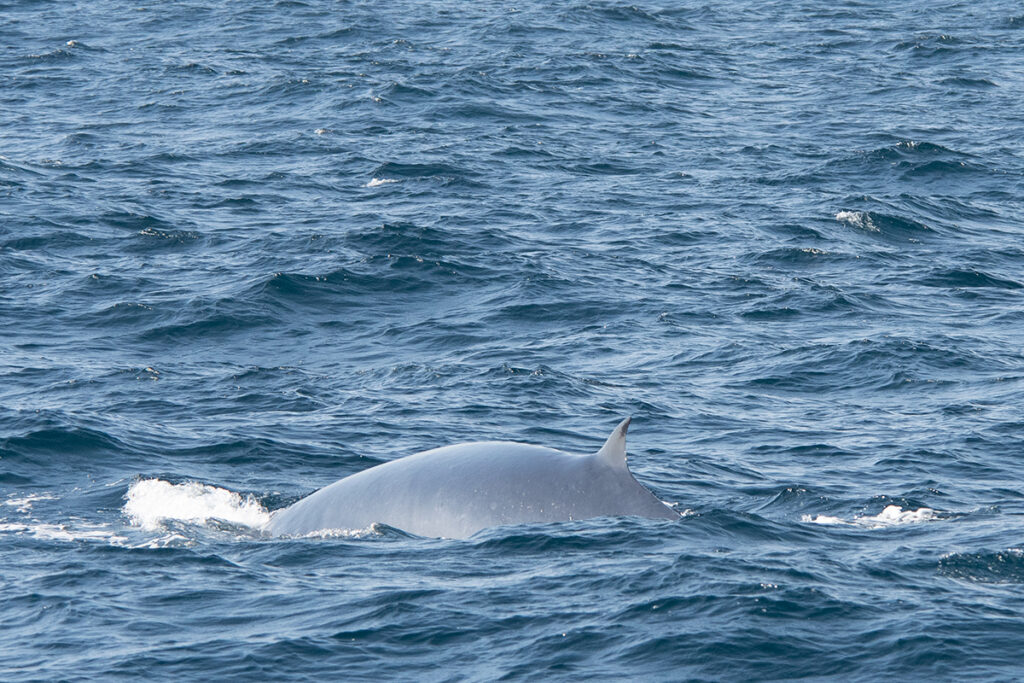
The Fin whale is the second-largest living creature on Earth. At about 19 meters in length, the female we were watching was longer than our 15-meter-long boat by a third. The sheer might of the animal was awe-inspiring.
Unlike Blue whales that live in Sri Lankan waters, Fin whales are migratory, so spotting this pair was pure luck. Even the skipper was very excited.
We stayed with the family for 3 or 4 dives and let them be on their way. For the young calves of migratory species, their first few months are all about drinking enough of their mother’s milk (up to 100 kg per day) to put on a thick layer of blubber that will shield them from the cold waters of their feeding grounds.
Blue Whale
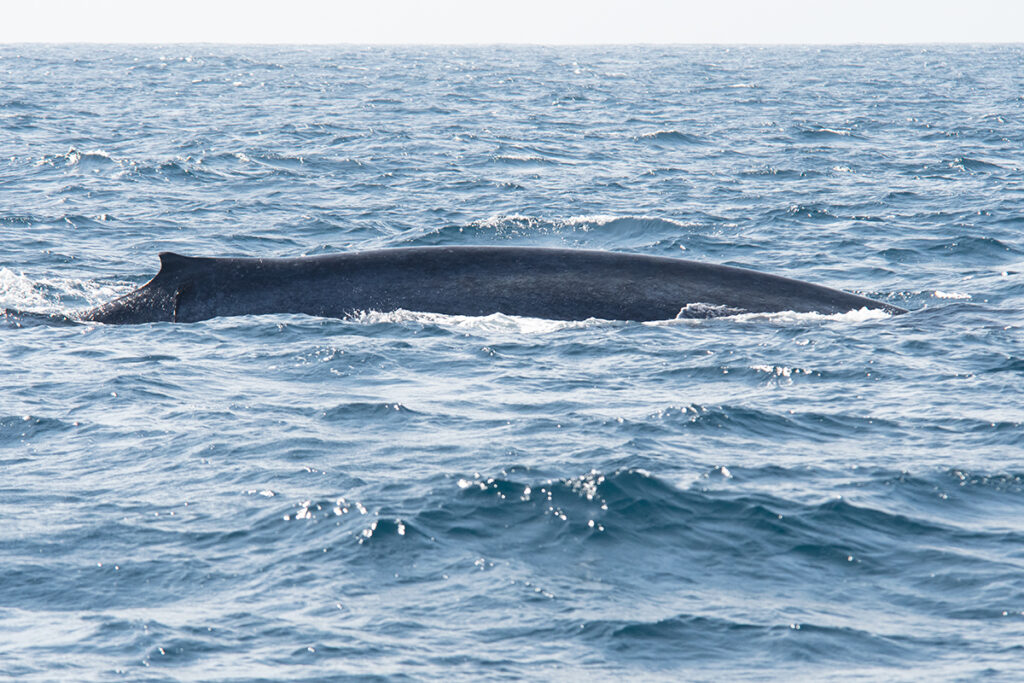
The rain that was building on the horizon meant that we had to abandon our plans for going further out to sea and instead follow the coastline. With no other Blue whales in sight, the skipper set course towards the cluster of boats that were now about 3 miles away.
While we were still a fare distance away, we could see that the boats were too close to the whale indeed. Worse, they kept chasing the whale from behind against all whale watching guidelines imaginable.
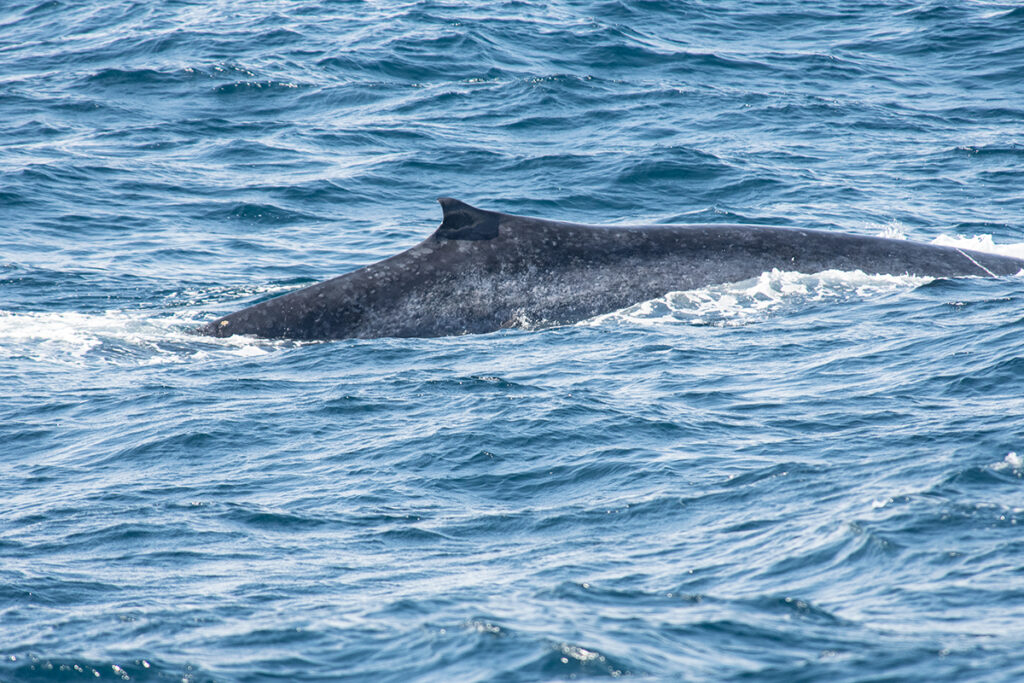
Mercifully, by the time we drew closer, there were only two boats remaining with the whale, one of which soon peeled off and headed back to the harbour.
We waited for the last boat to turn around, and once it did, we slowly cruised in the direction the whale was travelling. We didn’t try to chase the animal or motor out ahead of it. We just cruised along. And as often happens, the whale approached us itself.
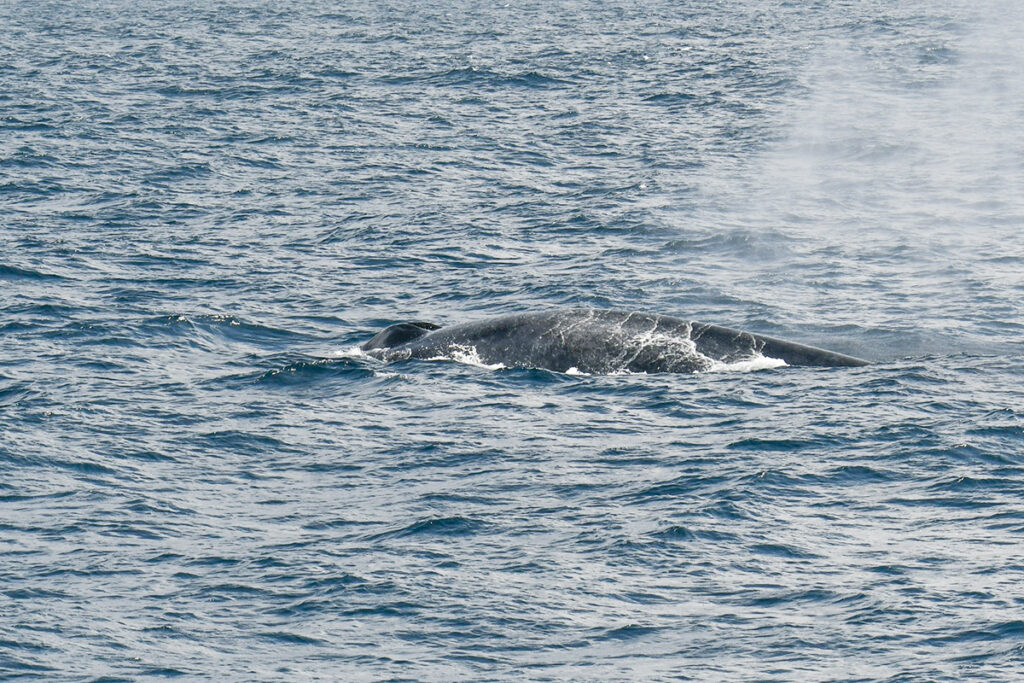
It was absolutely enormous. Even though you never see the entire whale unless you fly above it, we could sense how large it was. According to the skipper, the animal was about 22 meters long and weighed an incomprehensible 120 tons.
Yet Blue whales living in the warm waters of Sri Lanka are not the largest of their kind. Blue whales that live in Antarctica can grow to more than 30 meters in length (twice the length of our boat!) and weigh up to 200 tons. That’s larger than the biggest dinosaurs that ever lived.
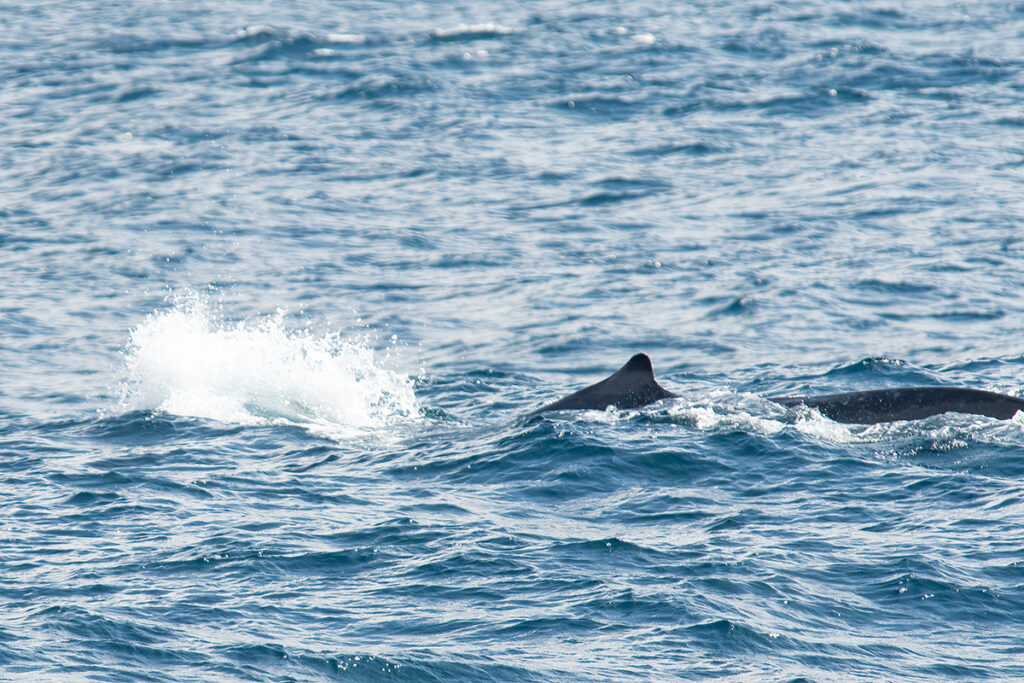
Yet despite their size, Blue whales were defenceless against human whalers and their harpoons. After 3 centuries of whaling, Blue whales were almost wiped out from our oceans. Today, there are somewhere between 5,000 and 15,000 mature Blue Whales distributed across the world.
While hunting of Blue whales was banned in 1966, they remain an Endangered species. Mostly because of their slow reproductive rate. A female Blue whale produces one calf every 4- 5 years. The pregnancy lasts about 12 months. Then the calf stays with its mother for 2 years and then another 12 months for the next pregnancy.
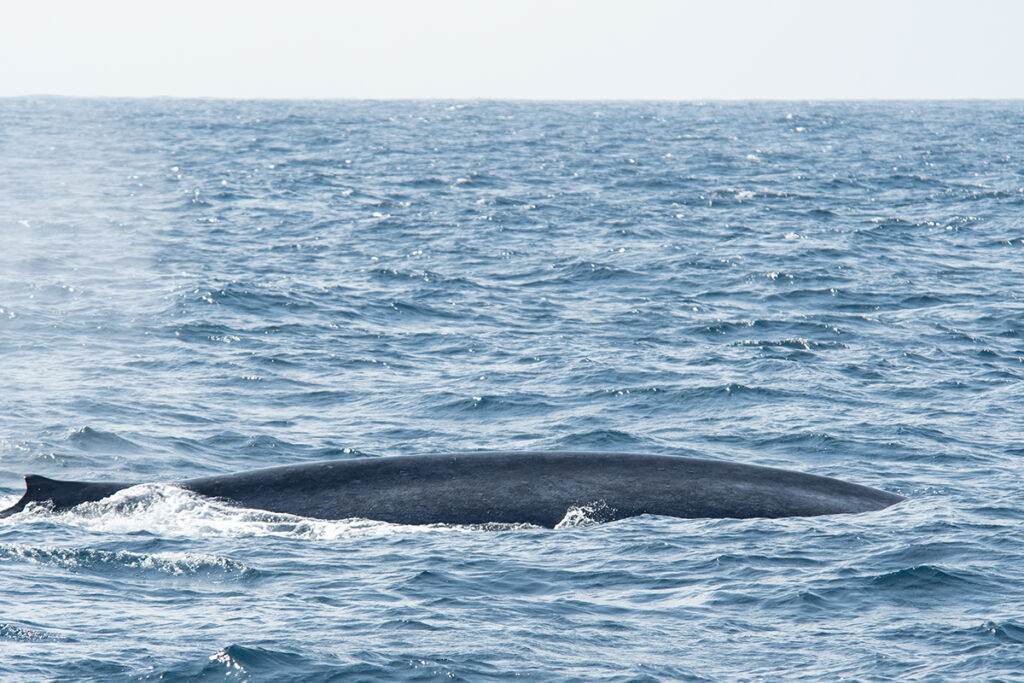
We stayed with the whale for 5 or 6 dives, conscious of the fact that it might be keen for some solitude after playing its part in whale watching tours all morning.
After two such excellent whale encounters the skipper figured the main part of the tour was complete and as we headed back to the harbour, the crew served us lunch.
Spinner Dolphins
After the Blue whales, the second-most popular marine mammal in Mirissa’s waters is the Spinner dolphin. While whales are awe-inspiring, the dolphins are more fun to watch. Especially the Spinner dolphins who are considered to be the most acrobatic dolphin species. They are famous for their habit of leaping out of the water and spinning repeatedly in the air before gliding back into the water.
I saw Spinner dolphins in Costa Rica and it was an exhilarating encounter. I was very keen to see them before the end of the cruise. And as we entered the harbour a large pod of spinner dolphins came to ride the bow wave of our boat.
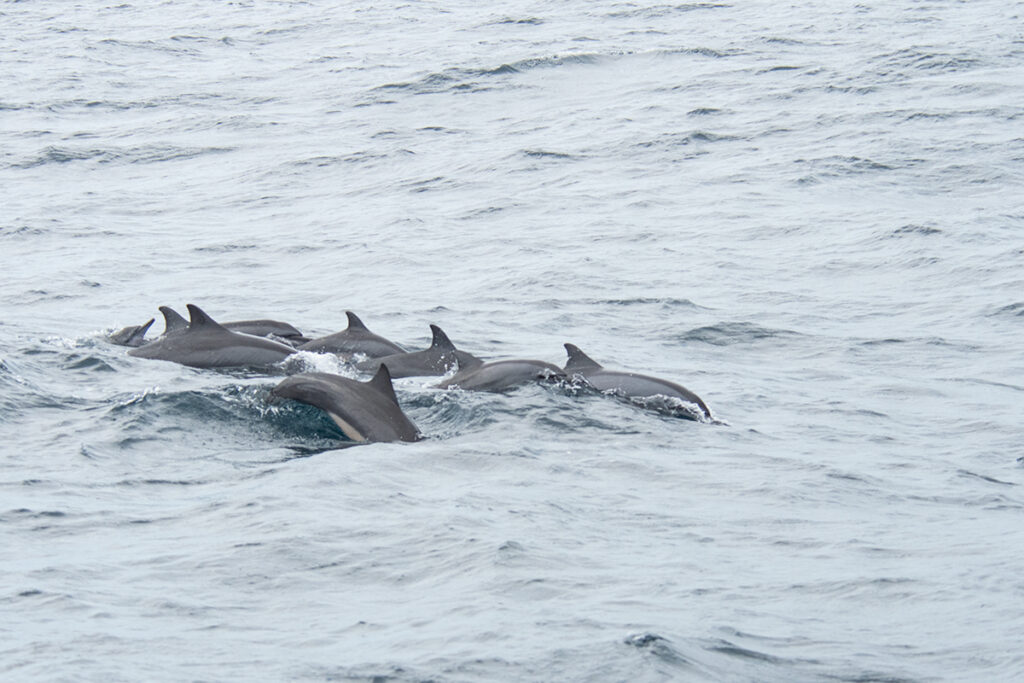
They came racing in a tight formation launching themselves out of the water and diving back in.
Like they knew exactly what they were doing, they came straight to the bow of our boat and raced it at a breakneck speed. Once they had enough, they would expertly veer to the side and race away from the boat occasionally leaping from the water. And just as one group left, another would come in.
At the risk of breaking our legs, a few of us rushed to the lower deck to be closer to the dolphins as they raced directly below us.
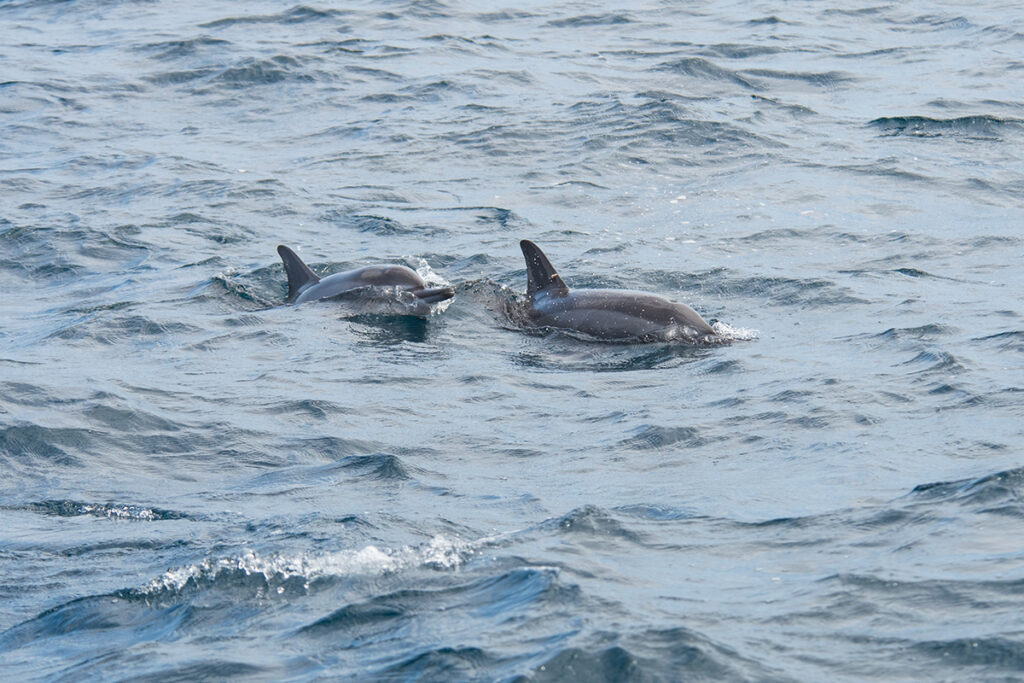
The spinner dolphins in Sri Lanka belong to the subspecies of the Long-nosed spinner dolphins. At 75kg they are one of the smallest species of oceanic dolphins and one of the most acrobatic ones.
We hung around with the dolphins for a good 15 minutes before continuing into the harbour to the relief of a few local fishermen whose small boats were tossed and turned in the commotion of our dolphin encounter.
Final Thoughts on Whale Watching in Mirissa
Having seen first-hand how tourist boats harass whales in Mirissa, we were very grateful for the way Raja and the Whales conduct their tours. They are clearly passionate about the whales and will do their best to encounter them but never at the expense of the animals’ well-being. And a mutually welcome encounter is a much more rewarding experience than the chase after a fleeing animal.
More on Exploring Sri Lanka
- Wilpattu National Park Safari Guide, Sri Lanka 2024
- Things to Do in Sigiriya for Nature Lovers – Wild Sri Lanka
- Best Ethical Whale Watching in Mirissa: Tour Review
- Guide to Planning Sri Lankan Safari
- 17 Things to Do in Trincomalee in 2023: Beaches, Whales & Temples
- 11 Things to do in Mirissa: Whales, Beaches, and Coconut Palm Trees

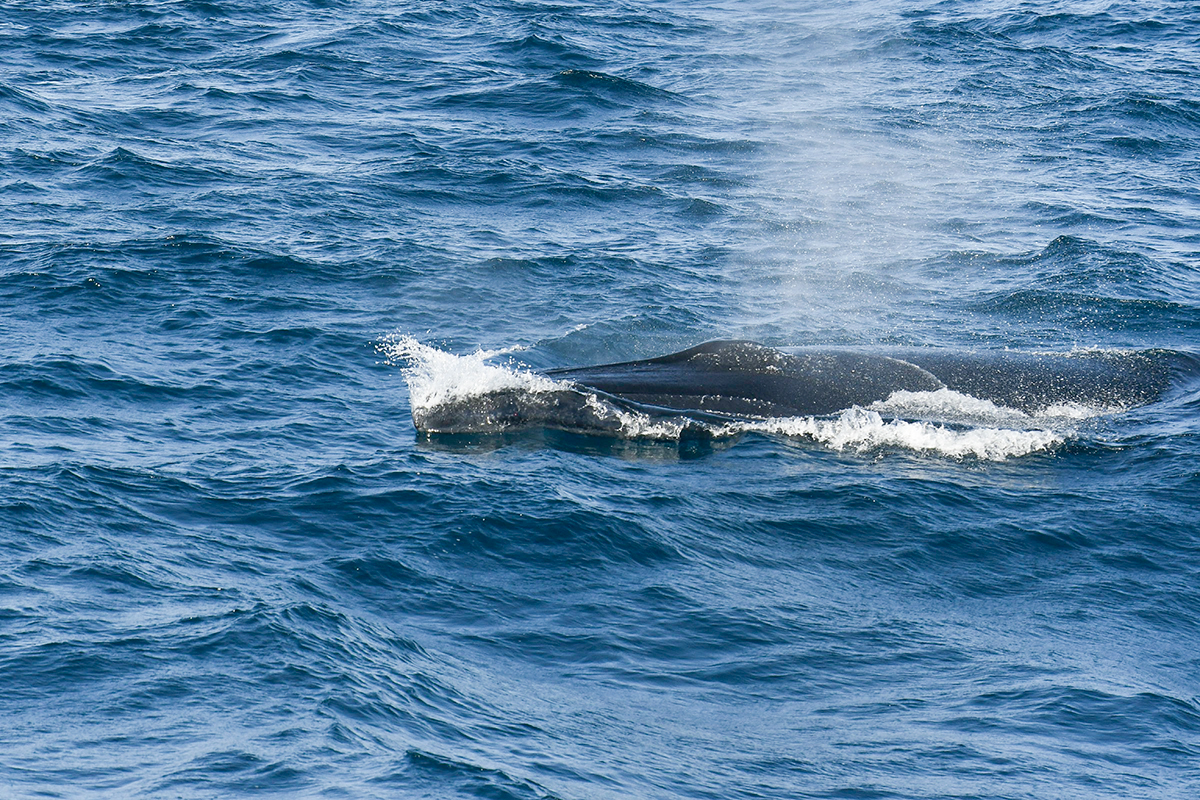
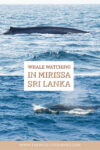
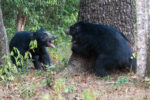

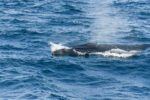

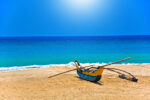
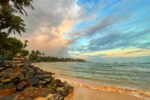
Hello. That was a wonderful and informative post. Could you share the contact of Raja with whom you had arranged the tour please ?
Hi Deepika, thank you for dropping by! You can follow the link from the post to Raja and the Whales website. Here it is again: http://rajaandthewhales.com/